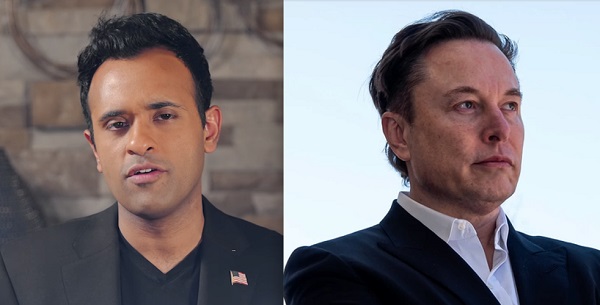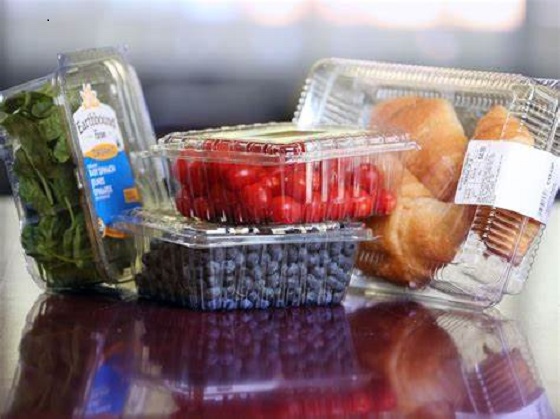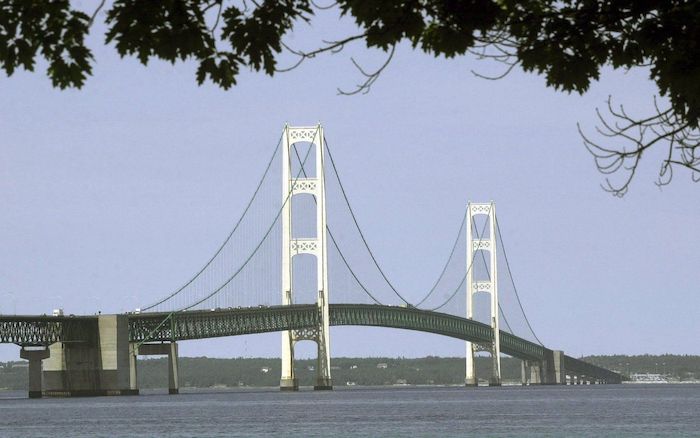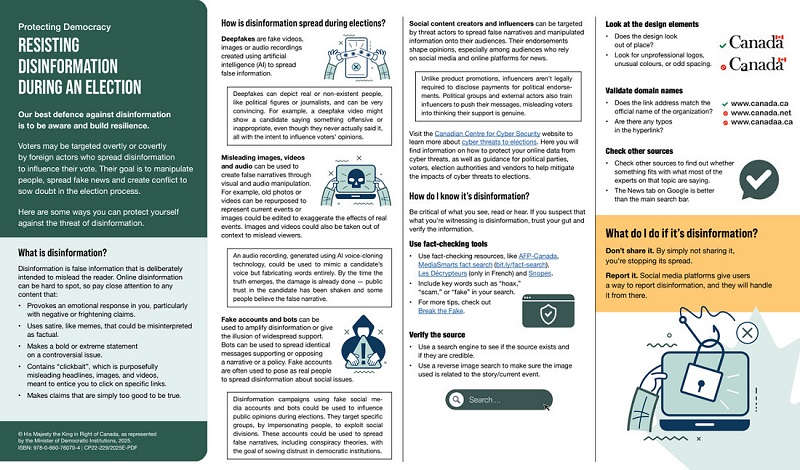Business
Chainsaws and Scalpels: How Governments Choose

Javier Milei in Argentina, Musk and Ramaswamy in the US.. What does DOGE in Canada look like?
Under their new(ish) president Javier Milei, Argentina cut deeply and painfully into their program spending to address a catastrophic economic crisis. And they seem to have enjoyed some early success. With Elon Musk now primed to play a similar role in the coming Trump administration in the U.S., the obvious question is: how might such an approach play out in Canada?
Sure. We’re not suffering from headaches on anything like the scale of Argentina’s – the debt we’ve run up so far isn’t in the same league as the long-term spending going on in South America. But ignoring the problems we do face can’t be an option. Given that the annual interest payments on our existing national debt are $11.7 billion (which equals seven percent of total expenditures), simply balancing the budget won’t be enough.
The underlying assumption powering the question is that we live in a world of constraints. There just isn’t enough money to buy everything we might want, so we need to both prioritize and become more efficient. It’s about figuring out what can no longer be justified – even if it does provide some value – and what’s just plain wasteful.
The Audit is a reader-supported publication. To receive new posts and support my work, consider becoming a free or paid subscriber.
Some of this may seem obvious. After all, when there are First Nations reserves without clean water and millions of Canadians without access to primary care physicians, how can we justify spending hundreds of millions of dollars funding arts projects that virtually no one will ever discover, much less consume?
Apparently not everyone sees things that way. Large governments operate by reacting to political, social, and chaos-driven incentives. Sometimes those incentives lead to rational choices, and sometimes not. But mega-sized organizations tend to lack the self-awareness and capacity to easily change direction.
And some basic problems have no obvious solutions. As I’ve written, there’s a real possibility that all the money in the world won’t buy the doctors, nurses, and integrated systems we need. And “all the money in the world” is obviously not on the table. So the well-meaning bureaucrat might conclude that if you’re not going to completely solve the big problems, you might as well try to manage them while investing in other areas, too.
Still, I think it’s worth imagining how things might look if we could launch a comprehensive whole-of-government program review.
How Emergency Cuts Might Play Out
Imagine the federal government defaulted on its debt servicing payments and lost access to capital markets. That’s not such an unlikely scenario. There would suddenly be a lot less money available to spend, and some programs would have to be shut down. Protecting emergency and core services would require making fast – and smart – decisions.
We would need to take a long, hard look at this important enumeration of government expenditures. There probably wouldn’t be enough time to bridge the gap by looking for dozens of less-critical million-dollar programs. We would need to find some big-ticket items fast.
Our first step might be to pause or restructure larger ongoing payments, like projects funded through the Canada Infrastructure Bank (total annual budget: $3.45 billion). Private investors might pick up some of the slack, or some projects could simply go into hibernation. “Other interest costs” (total annual budget: $4.6 billion) could also be restructured.
Reducing equalization payments (total annual budget: $25.2 billion) and territorial financing (total budget: $5.2 billion) might also be necessary. This would, of course, spark parallel crises at lower levels of government. Similarly, grants to settle First Nations claims (total budget: $6 billion) managed by Crown-Indigenous Relations and Northern Affairs Canada would also be at least temporarily cut.
All that would be deeply painful and trigger long-term negative consequences.
But there’s a far better approach that could be just as effective and a whole lot less painful:
What an All-of-Government Review Might Discover
Planning ahead would allow you the luxury of targeting spending that – in some cases at least – wouldn’t even be missed. Think about programs that were announced five, ten, even thirty years ago, perhaps to satisfy some passing fad or political need. They might even have made sense decades ago when they were created…but that was decades ago when they were created.
Here’s how that’ll work. When you read through the program and transfer spending items on that government expenditures page (and there are around 1,200 of those items), the descriptions all point to goals that seem reasonable enough. But there are some important questions that should be asked about each of them:
- When did these programs begin?
- What specific activities do they involve?
- What have they accomplished over the past 12 months?
- Is their effectiveness trending up or down?
- Are they employing efficiency best-practices used in the private sector?
- Who’s tasked with monitoring changes?
- Where are their reports published?
To show you what I mean, here are some specific transfer or program line items and their descriptions:
Department of Employment and Social Development
- Workforce Development Agreements ($722 million)
- Indigenous Early Learning and Child Care Transformation Initiative ($374 million)
- Payments to provinces, territories, municipalities, other public bodies, organizations, groups, communities, employers and individuals for the provision of training and/or work experience, the mobilization of community resources, and human resource planning and adjustment measures necessary for the efficient functioning of the Canadian labour market ($856 million)
Department of Industry
- Contributions under the Strategic Innovation Fund ($2.4 billion)
Department of Citizenship and Immigration
- Settlement Program ($1.13 billion)
Department of Indigenous Services
- Contributions to provide income support to on-reserve residents and Status Indians in the Yukon Territory ($1.05 billion). Note that, as of the 2021 Census, there were 9,150 individuals with North American Indigenous origins in Yukon. Assuming the line item is accurately described, that means the income support came to $114,987/person (not per household; per person).
Each one of those (and many, many others like them) could be case studies in operational efficiency and effectiveness. Or not. But there’s no way we could know that without serious research.
The Audit is a reader-supported publication. To receive new posts and support my work, consider becoming a free or paid subscriber.
Invite your friends and earn rewards
2025 Federal Election
The “Hardhat Vote” Has Embraced Pierre Poilievre

 David Krayden
David Krayden
Blue collar and unionized workers are supporting Pierre Poilievre and the CPC
When President Richard Nixon won a landslide in his 1972 reelection, he did so by broadening his own personal popularity and the appeal of the Republican Party to blue collar and unionized workers. It was called the hardhat vote and many working people embraced Nixon because he seemed to be talking the same language as they were. Nixon talked about law and order and getting tough on crime; safer streets and harsher penalties for serious crime. Although unionized workers had traditionally voted for the Democratic Party and seen the Republicans as the party of the wealthy, by 1972 the Democrats had moved far to the left on social issues and were completely out of touch with average Americans who saw Democratic presidential nominee Sen. George McGovern as being soft on crime and approving of the anarchy on the streets.
It’s precisely the language that Conservative Party of Canada leader Pierre Poilievere is speaking in the 2025 federal election. As support for the New Democratic Party has collapsed throughout the election campaign, don’t think most of it is going to the Liberal Party. Poilievre has been targeting blue collar workers for years with his emphasis on the trades and talking about middle class tax cuts and safe streets. A factory or construction worker is middle class and just want an affordable lifestyle for their families. They don’t have a lot of time for the woke underbelly of the Liberals or the NDP and are increasingly reluctant to support either party because both have appealed to elites.
Listen to Karl Lovett, the president of the Local 773 of the International Brotherhood of Electrical Workers, talk about Carney corruption and why he is supporting Poilievre and the CPC in 2025.
“Mark Carney also failed to pay $5 billion in Canadian taxes by hiding his company’s assets in Bermuda above a bike shop. Hard to believe that information comes from Canada’s NDP, or at least who is left of them, because the irony is, Mark Carney has eaten all those people alive. Even the mayor of Lima has warned Canadians not to vote for Mark Carney, and why for ripping him off the poorest of the poor people in Peru. That’s who he ripped off,” Lovett said.
“Listen, there are countless other outrageous examples proving that Mark Carney doesn’t give a damn about the Canadian working man. And now, as prime minister, which he’s not, Carney is promising to put carbon tax and tariff on the auto industry. It’s another rip-off screen that’s right. We’re getting punched by Trump on one side of the border, and Carney plans to punch us on this side of the border, also pretending it’s all about climate change, and now he’s made millions off the workers’ backs. He wants more than money. He wants more power. He wants all of the power to do whatever he wants to do. Mark Carney cannot be trusted with this power. Mark Carney cannot be trusted to protect workers,” Lovett continued.
The union leader told a cheering crowd that “Mark Carney is in it for himself, and when he loses this election, you can bet Mark Carney is going to leave Canada in a New York minute. But there’s hope, there’s hope, there’s our last hope. His name is Pierre Poilievere – the .only hope for Canadian workers. You see Mark Carney fooled Justin Trudeau. We can’t let him keep fooling us.”
“Local 773, which I represent, knows Pierre Poilievre very well. We can proudly tell you that Pierre has our back. Pierre has been putting Canadian people to work and Canadian workers. First, local 773 began working with Pierre Poilievre, the Conservative Member of Parliament Chris Lewis, some years ago, when it became all too clear that the Liberal Party had zero interest in helping out workers. Upon winning the leadership of the party, Pierre made Local 773 his very first priority, he came to my union hall. Pier made the Local 773 Visitor Training Center, and he met all our workers, and he made a pledge to me; he’s not going to turn his back on us, and I believe him,” Lovett said.
Toronto Sun columnist Joe Warmington agreed with me and you can hear that entire interview, below. “Labor wants to work, and they want to, you know, build things, and they want those good, paying jobs, and that’s what Poilievre has always been about, you know.”
“He wants more power. He wants all of the power to do whatever he wants to do. Mark Carney cannot be trusted with this power. Mark Carney cannot be trusted to protect workers,”
“Again, it’s hard to know, but I always felt … and I still think that Poilievre is going to pull this off because of these reasons that you’ve raised today, I never really bought into and again, I’m just one person’s opinion, and I go on the ground. In the air, the polls are saying, I know there’s this main street poll today, maybe it’ll swing differently. But in the air, it says one thing, and on the ground, it says another thing. And that clip you just showed, that’s the ground, that’s where the workers are, that’s where the families are.”
2025 Federal Election
Poilievre will cancel Mark Carney’s new Liberal packaging law and scrap the Liberal plastic ban!

From Conservative Party Communications
Conservative Leader Pierre Poilievre promised today that a new Conservative government will stop Mark Carney’s proposed Liberal food tax and scrap the existing Liberal plastic ban. Poilievre will:
- Stop proposed new labelling and packaging requirements that will raise the cost of fresh produce by as much as 34% and cost the average Canadian household an additional $400 each year.
- Scrap the Liberal plastics ban, including the ban on straws, grocery bags, food containers and cutlery, and other single-use plastics, letting consumers and businesses choose what works for them.
- Protect restaurants, grocers, and low-income Canadians from one-size-fits-all packaging rules that disproportionately affect those who can least afford it.
“After the Lost Liberal Decade, many Canadians can barely afford to put food on the table. And now Mark Carney and the Liberals want to make it even harder with a new food packaging law that will raise the price of food–again,” said Poilievre. “A new Conservative government will keep food prices down by scrapping the Liberal plastic ban and stopping Carney’s new Liberal food tax.”
After a decade of out-of-control spending and massive tax increases, families are spending $800 more on food this year than they did in 2024, and food banks had to handle a record two million visits in a single month. In Montreal, 44 percent of CEGEP students are experiencing some form of food insecurity, while places like Hawkesbury, Kingston, Toronto and Mississauga have all declared food insecurity emergencies.
And food prices are still rocketing upwards, surging by 3.2% over the last year, with no end in sight. In the last month alone, food inflation increased by 1.9 percentage points—the largest monthly jump in food prices in decades.
As if this wasn’t bad enough, Liberals have made life even more expensive and inconvenient for Canadians by banning plastics – including everything from straws to bags to food packaging. The current Liberal ban on single-use plastics will cost Canadians $1.3 billion dollars over the next decade.

Now Mark Carney wants to make it worse by adding complicated and costly new food packaging rules that will drive up the price of food even more–in effect, a new Liberal food tax. Plastic food packaging makes up 1/3 of all plastic packaging in Canada. The proposed Liberal food tax will cost the average Canadian household an additional $400 each year, waste half a million tonnes of food, decrease access to imported fruit and produce, and increase food inflation. The Chemistry Industry Association of Canada has also warned that this tax will put up to 60,000 Canadians out of work.
“The Liberals’ ideological crusade against convenience has already driven up food prices and the last thing Canadians need is Mark Carney’s new food tax added directly to your grocery bill,” said Poilievre. “The choice for Canadians is clear, a fourth Liberal term that will make food even more expensive or a new Conservative government that will axe the food tax and bring back straws, grocery bags and other items, to make life more affordable and convenient for Canadians – For a Change.”
-

 Daily Caller2 days ago
Daily Caller2 days agoTrump Executive Orders ensure ‘Beautiful Clean’ Affordable Coal will continue to bolster US energy grid
-

 2025 Federal Election2 days ago
2025 Federal Election2 days agoBREAKING from THE BUREAU: Pro-Beijing Group That Pushed Erin O’Toole’s Exit Warns Chinese Canadians to “Vote Carefully”
-

 Business2 days ago
Business2 days agoChina, Mexico, Canada Flagged in $1.4 Billion Fentanyl Trade by U.S. Financial Watchdog
-

 COVID-191 day ago
COVID-191 day agoTamara Lich and Chris Barber trial update: The Longest Mischief Trial of All Time continues..
-

 Energy1 day ago
Energy1 day agoStraits of Mackinac Tunnel for Line 5 Pipeline to get “accelerated review”: US Army Corps of Engineers
-

 2025 Federal Election2 days ago
2025 Federal Election2 days agoAllegations of ethical misconduct by the Prime Minister and Government of Canada during the current federal election campaign
-

 2025 Federal Election15 hours ago
2025 Federal Election15 hours agoPRC-Linked Disinformation Claims Conservatives Threaten Chinese Diaspora Interests, Take Aim at PM Carney’s Debate Remark
-

 Daily Caller2 days ago
Daily Caller2 days agoDOJ Releases Dossier Of Deported Maryland Man’s Alleged MS-13 Gang Ties












